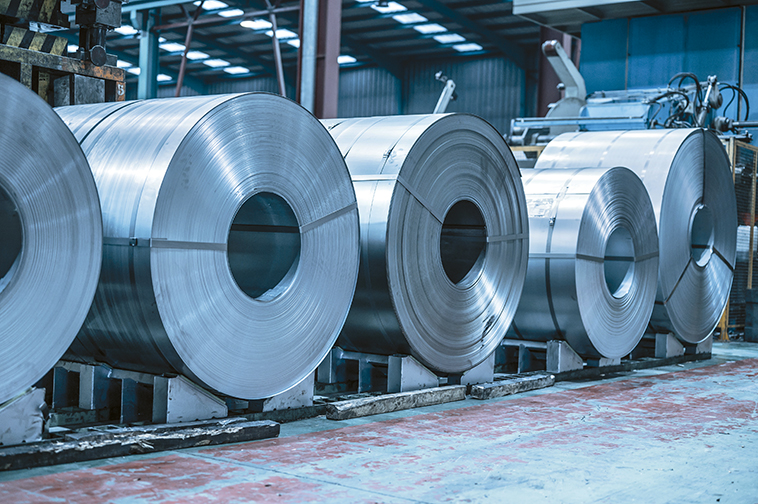If you plan to order a new Class 8 truck in 2021, waiting may not be wise. That’s because each new month brings more orders for new trucks than can be built, and the backlog is growing swiftly. As the backlog grows, there will also be more demand for used trucks, at a time when fewer are being traded in.
In February, 15,727 new Class 8 trucks were sold on the U.S. market, according to data received from ACT Research (actresearch.net). That’s down 8.4% from January sales of 17,164, and it’s down 0.5% from February 2020 sales figures.
At the same time, orders for new trucks have skyrocketed. North American orders for new Class 8 equipment totaled 43,800 in February, up 212% from February 2020 — and far ahead of the industry’s current production rate.
As of March 1, the backlog of trucks that have been ordered and are waiting to be built stands at 228,000. At February’s build rate, it would take 11.2 months just to clear the backlog if no other orders were placed.
“For perspective, in the seven-month period of January through August 2020, manufacturers averaged nearly 31,000 trucks per month,” offered Kenny Vieth, president and senior analyst for ACT. “In February, they built just over half that amount.”
It isn’t that manufacturers wouldn’t like to build more trucks. One issue is staffing. Some workers affected by the COVID-19 pandemic haven’t returned to work yet, but even those who have face challenges.
“Growing staff while trying to social distance and follow prescribed safety rules is difficult,” Vieth noted.
The bigger issue, however, is parts. OEMs are limited by the supply of vehicle components they can buy. That’s a common issue when any industry ramps up production. If more trucks are built, more tires, engines, seats and so forth are needed. More steel is required, in the form of engine blocks, axles and frame rails. Suppliers also need to ramp up production, and they need more materials from their own suppliers. Typically, it takes a month or two for suppliers to meet the increased demand.
Perhaps the most critical parts shortage is semiconductors, or “chips.” As people stayed home due to COVID closings and layoffs, they got on their computers and ordered stuff. They bought new laptops and tablets, PlayStations, phones, games, vacuum cleaners and more. Nearly everything they ordered is built using semiconductors.
New vehicles require dozens — sometimes hundreds — of chips. Every component, from wheel sensors to turn signals to the engine electronic control module (ECM) requires semiconductors. Even tires contain chips. Most of the automobile makers have already announced reductions from their first-quarter production goals this year. Some are building vehicle components as opposed to entire vehicles, and stockpiling the unfinished products until semiconductors are available.
A Feb. 21 Forbes article by Stephen McBride pointed out that more than 70% of the world’s “top shelf” semiconductors are made by one company, Taiwan Semiconductor Manufacturing Co. (TSMC), where manufacturing is already booked out into the fall.
“Semiconductors are now the most important resource in the world,” McBride wrote.
The demand isn’t going away any time soon. Electric vehicles, some say, are destined to replace fossil fueled transport. Each electric vehicle built contains more than 3,000 semiconductors.
Trailer manufacturers are having the same issues with components such as axles and with steel to manufacture them. ACT’s Trailer Components Report, issued March 1, reported that January’s order numbers were 66% higher than current build rates. The firm reported 24,200 trailer orders in February, with dry van and refrigerated trailers leading the way.
“Discussions have indicated supply issues include castings, forgings, sheet metal, wood products and tires,” said Frank Maly, director of commercial vehicle transportation analysis and research for ACT. “Many of the vendors for these items, excluding wood, are seeing strong demand from the truck side of the CV market as well, and these limitations have tempered our forecasts.”
On an individual truck builder basis, Freightliner sold 1,038 fewer Class 8 trucks in February than in January, according to information received from Wards Intelligence (wardsintelligence.com). Freightliner sold 6,247 new trucks in February, down 14.2% from the prior month. Compared to February 2020, however, sales increased by 403 trucks (6.9%).
Peterbilt reported sales of 2,335 for the month, down 418 (15.2%) from January’s 2,753 and down 80 units (3.3%) from February 2020 sales.
PACCAR sibling Kenworth reported 2,132 sold, up 14.1% from January’s 1,868 but down 12.0% from February 2020 sales of 2,424.
International sales fell by 172 trucks (10.2%), with 1,519 sold in February versus 1,691 in January. Compared to February 2020, sales dropped by 194 (11.3%).
Volvo Truck sales of 1,607 declined 8.0% from January but grew 21.2% from 1,326 sold in February 2020. Volvo-owned Mack Truck’s 1,182 trucks bested January sales by 100 trucks for a 9.2% gain. Compared with February 2020 however, Mack sales declined 7.6%.
Western Star reported 347 sold in February, a drop of 17.0% from January’s 418 and 24.4% down from February 2020 sales of 459.
At the end of February 2021, Class 8 market shares on the U.S. Market are as follows: Freightliner, 40.6%; Peterbilt 15.2%; Kenworth 13.9%; Volvo 10.5%; International 9.9%; Mack 7.7%; and Western Star at 2.3%.
With the U.S. economy poised to rebound, a shortage of parts is slowing production of trucks and trailers as new orders push the backlog higher each month. When buyers can’t get new trucks, they’re forced to hold on to older equipment longer, driving demand — and pricing — for used trucks higher.
Since freight is expected to remain strong, a capacity crunch might push rates back into record territory. March stimulus payments, designed to help the economy, could create more freight than the trucking industry can handle, and new trucks won’t be available in numbers large enough to handle the increase. Talk of tax increases from Washington could possibly offset temporary economic gains from the stimulus, but a new tax structure could be months away.
While trucks may be harder to come by in the coming months, those who can find them may capitalize on freight rates that are expected to remain strong. Those who wait may find that trucks are more expensive — if they can find them at all.
Cliff Abbott is an experienced commercial vehicle driver and owner-operator who still holds a CDL in his home state of Alabama. In nearly 40 years in trucking, he’s been an instructor and trainer and has managed safety and recruiting operations for several carriers. Having never lost his love of the road, Cliff has written a book and hundreds of songs and has been writing for The Trucker for more than a decade.














